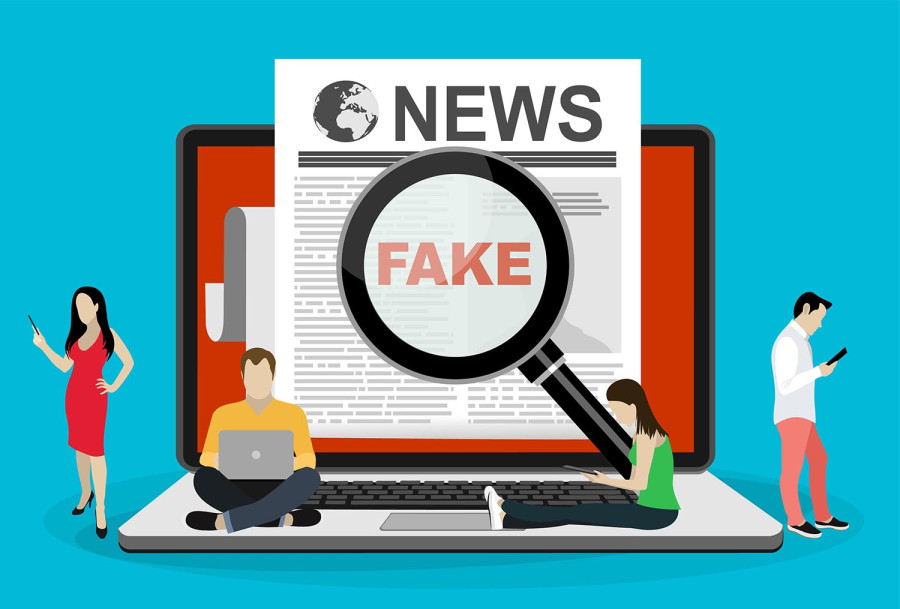Nepal’s Digital Dilemma: Navigating the Minefield of Misinformation
Nepal, with nearly half its population actively engaged on social media, faces a dual reality: the digital realm offers unprecedented opportunities for communication and empowerment, yet simultaneously presents a perilous landscape rife with misinformation, disinformation, and online hostility. This digital influx significantly impacts public opinion, poses a threat to social cohesion, and undermines democratic values. As traditional media gives way to digital platforms, the urgent need to navigate this complex information ecosystem becomes paramount. The internet’s omnipresence has transformed how news and information are produced, disseminated, and consumed. Unlike the past, where established media houses controlled the narrative, anyone with internet access now possesses the power to generate and share information, blurring the lines between credible sources and unverified claims.
The Double-Edged Sword of Digital Democracy
Digital tools have democratized media, giving voice to diverse and marginalized perspectives, but this democratization comes at a cost. The sheer volume of unverified and biased content spreading at an unprecedented pace has created an environment of information chaos. Algorithms and personalized feeds curate what users see, reinforcing existing biases and creating echo chambers that make it increasingly difficult to distinguish fact from fiction. This amplified digital echo further erodes trust in the media landscape. While digital platforms have empowered the public, they have also become breeding grounds for misinformation, disinformation, hate speech, and manipulated content, contributing to a distorted reality where truth becomes obscured.
The Human Factor: Why We Share Without Thinking
The human tendency to exaggerate, driven by the desire to showcase wealth, wisdom, or beauty, has been amplified by technology’s reach. Social media platforms thrive on this inherent human urge for self-display and instant gratification. The impulsive nature of likes, comments, and shares, coupled with clickbait tactics, fuels the virality of misinformation and disinformation. Individuals often share content without considering the potential consequences of spreading inaccurate information, contributing to the broader problem of information disorder. Historical examples, such as the misinformation campaign in the Mahabharata and the Roman propaganda against Mark Antony, demonstrate the enduring nature of information manipulation, though its scale and impact have been dramatically amplified in the digital age.
Nepal’s Digital Battleground: A Breeding Ground for Information Disorder
A recent study by BBC Media Action Nepal highlights social media as the primary source of misinformation and disinformation in the country, with politicians, party cadres, journalists, foreign actors, influencers, and troll farms identified as key contributors. With a high percentage of daily internet users and Facebook and YouTube as dominant platforms, the potential for widespread dissemination of false information is substantial. The study revealed that a significant majority of respondents express concern about the proliferation of inaccurate information, exacerbating existing anxieties surrounding hate speech and online harassment. The increasing use of AI-driven manipulation further complicates this issue, raising alarms among citizens and policymakers alike.
Combating the Infodemic: A Collaborative Approach to Resilience
The proliferation of misinformation and online manipulation often provides justification for governments to implement restrictive measures, including heightened surveillance, censorship, and even internet shutdowns, posing a threat to freedom of expression and democratic values. Limited awareness of how to navigate the complexities of online information and a popularity-driven mindset contribute to the spread of misinformation. Building resilience against information disorder requires a comprehensive, multi-faceted strategy involving government, civil society, media, the private sector, and technology companies. Media and information literacy initiatives are crucial for empowering individuals to identify and critically evaluate online content.
Empowering Citizens and Leveraging Technology: A Path Towards a Healthier Digital Ecosystem
Collaboration is paramount. Joint efforts are needed to create digital spaces that foster healthy civic engagement. Engaging social media influencers and partnering with tech companies can amplify efforts to combat information disorder. Integrating media literacy into school and university curricula can equip future generations with the skills to navigate the digital landscape responsibly. The ethical use of AI offers a promising avenue for detecting and flagging misinformation in real-time, promoting a healthier media ecosystem. Empowering local governments and youth-led organizations can further strengthen community-level responses. Ultimately, combating misinformation is a shared responsibility. By fostering critical thinking, promoting responsible online behavior, and advocating for transparency, we can collectively build a digital world where truth prevails and democratic values flourish.


